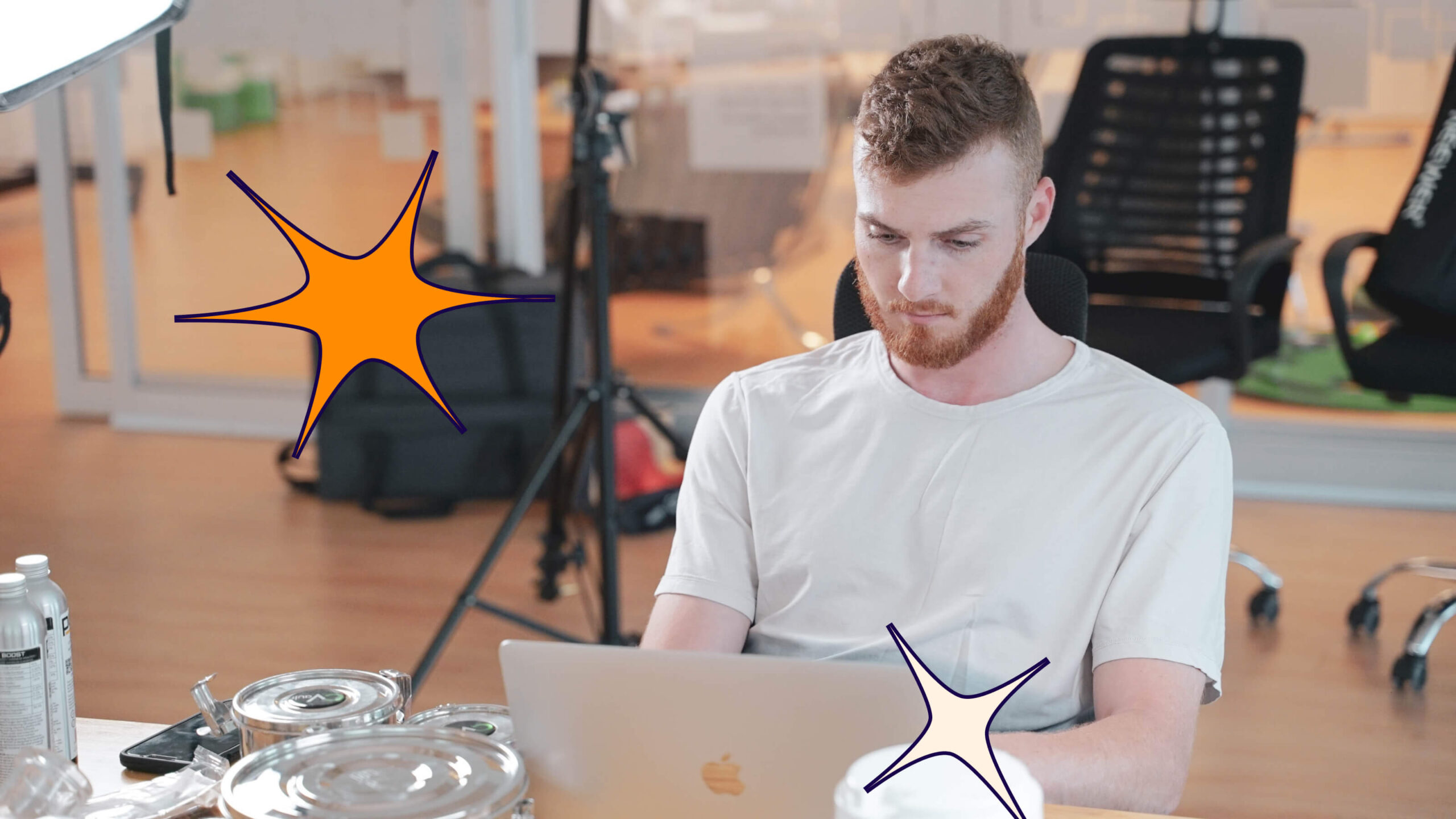Editor’s note: This post originally appeared on the Connected.io blog.
Ah, synthesis. The romanticized phase in the product development process when practitioners take all of their research data—interview transcripts, scrawled notes, participant headshots, audio, video, etc., etc.—and mine, sort, and cluster that data in order to identify insights. It’s a chaotic phase, which often culminates with project teams holed up in dark rooms papered in sticky notes, frantically trying to define an opportunity to brainstorm against.
As product designers, we’re excited when it’s time for synthesis. It’s not everyone’s favorite time, but it’s one of ours; it’s when we empathize in order to make sense of the needs of the people we are trying to design for. It requires empathy and openness, and a whole lot of patience, especially when your stickies start to flutter off the wall, out of their neatly sorted clusters.
Synthesis is also often associated with crunch time; there never seems to be enough time to fully make sense of the data. While we consider ourselves sticky note aficionados, doing synthesis digitally instead of physically—with a database like Airtable or Optimal Reframer—not only relieves that time-crunch but also augments different aspects of the synthesis process. From being able to share more effectively and efficiently, to organizational perks, digital synthesis will help you and your team move into ideation (sans stickies).
Why getting synthesis right matters
Before we jump into what the process of doing digital synthesis looks like, it’s key to note why it’s so important to take the time and get synthesis—any kind of synthesis—right in the first place. If you don’t find the right problem to solve and frame the opportunity in the right way—constrained, but not too constrained, broad, but not too broad—you won’t only be ideating in the wrong space, your product will be headed in the wrong direction. With tools like Airtable and Optimal Reframer, it’s easier to get that right frame and start building the thing that will work best for the people using your product.

The synthesis process
So, there are four loose steps to doing synthesis: Share, Organize, Interpret, and Share Again (e.g. the final research report). We say “loose” here because we’ve often found that it’s quite natural to jump between the three; you might end up organizing and trying to interpret, then re-organizing and re-interpreting. At any rate, sharing relates to knowledge or level-setting amongst teams; organizing happens when you sift through and group similar chunks of knowledge together; interpreting refers to sense-making of those knowledge chunks; and sharing again is when the research is neatly packaged up into some sort of story. Each of these steps can be augmented through a digital database or comparable tool.
Step one: share
When you are working in an analog fashion, sharing means getting the entire team in a room in order to review your learnings together. This might mean speaking aloud and recalling anecdotes from memory, relating pieces of interview transcripts to the group at a user-level, or even re-listening to audio recordings. Typically, as you go through the sharing process, there is an element of transcript; of taking those anecdotes, interviews and recordings and jotting things down on sticky notes.
Ultimately, there are lots of ways to share so that your team collectively has the same knowledge base to work from. This process is time-consuming, and getting an entire team in the room can be a challenge. And, if you have clients that are interested in being brought along in your discovery process, then this becomes doubly hard—either trying to get the client’s time, or taking the additional time to loop them after your sharing session(s).

Which is where the database comes in handy. It removes the extra step of needing to transcribe your interview notes on to stickies, and instead notes can be copied and pasted and then marked-up accordingly. And, by storing your observations in a tool like Airtable, your team can work asynchronously to share information with one another. Databases provide practitioners with the ability to create atomic units of research, which are stand-alone observations from your research. For example, you might have an observational nugget from your research like this:

With a database tool like Airtable, this nugget can be annotated and tagged, like this:

These observations can have as many tags as you as a practitioner see as relevant (e.g., user demographic, quotes, link to photos, or audio snippets). Thus, observations can be interpreted at a much more thorough level than the single sticky provides. By documenting and sharing via Airtable, it’s also easier to get clients involved in the early stages of your research. Observational nuggets can be shared back to your stakeholders. This can help you to demonstrate why up-front user research is so valuable, and also get buy-in later on when concepts are being selected.
Step two: organize
Here, we organize in order to look for the patterns and themes in our research that we have collected to date. Also called affinity mapping, these patterns and themes help us to identify potential relationships between data points in our research (and will give us something to interpret, later on in step three).
In an analog world, organization is, once again, time-consuming. We might have hundreds of data points scrawled down on individual stickies, so trying to group together those stickies in just the right category is a drawn-out process. And, if your team doesn’t have a designated synthesis space—which, let’s be realistic, isn’t always the way of the open office—maintaining your organization over the course of a few days or weeks is next to impossible.
The other predicament of the analog organization step is that well, it’s analog and so static. We group things together in one way, and they stay that way. Sometimes, we might rewrite sticky notes out if they seem to fall in with more than one theme, but even then we are reviewing static clusters of themes, as opposed to dynamic and changing entities that evolve as more connections are seen and made.

Being able to employ this sort of tagging enables you to start uncovering new trends. Perhaps a particular data point was only seen as a pain for customers you interviewed who are under 30. And, because we can continuously tag, and retag, and tag some more, designers can be less biased in our data organization. In layman’s terms: When things aren’t static, it’s easier to see them in different ways.
Step three: interpret
With interpretation, we are identifying what the relationships we’ve found are, exactly (and why they are important to look more closely at). Whether analog or digital, when you are interpreting you are defining what your patterns and themes are in order to create a bigger narrative behind your data. Identifying the relationships between our insights in an analog fashion isn’t necessarily more time-consuming, or more limiting than a digital database. The main difference here is the quality of insights you may be able to arrive at.
With a digital database, you’ve had the opportunity to organize your data in a dynamic way, which may lend itself to being able to interpret things in a deeper and more informed fashion. Connecting the dots can happen that much more smoothly, and even prioritization of your insights can be quickly conducted by being able to look at the sheer volume of nuggets that back up your insights. Another valuable quality of digital interpretation is the fact that you feel like you have room to breathe; that you and your team can work asynchronously to reflect on each other’s interpretations.
Step four: share again
After you’ve shared, organized, and interpreted it’s usually about time to share again; to communicate (or re-communicate, if your clients have been involved in your synthesis process) your understanding of the research back to your stakeholders. Typically this takes the form of a research report, which details the narrative you’ve uncovered via the research with granular details to support it.
Unfortunately, research reports are usually either lengthy (and therefore ignored) or lack an obvious takeaway of what to do next—meaning it is looked at once and subsequently forgotten. Even a truly compelling narrative or a beautiful deck isn’t enough to get people to start paying attention and act on your research.

Much like in the initial sharing phase, atomic nuggets of research are a great way to actively bring your stakeholders into your work and show tangible evidence. With digital tools, you can have a report but keep it snappy and short. You can focus your report on your narrative alone, and then include links of ‘views’ to your research. Views are specific ways of looking at your research in a database tool. Instead of the single view a regular ol’ spreadsheet would provide, a view provides different ways of looking at the same underlying data.
For example, you could create a view that supports a point in your narrative around why children develop an emotional attachment to their robot vacuums. This view could include all of the individual observational nuggets that ladder up to this broader theme—giving your narrative some serious evidence to back it up. Or, maybe you have another point around emotional attachment as it relates to adults. You could create a second view that includes all of those nuggets—even if some of them are the same nuggets as your first point.

Additionally, the database lends itself quite nicely to other forms of research outputs beyond the report. Facebook Research wrote an article on four alternatives to the report: Mini-Museums, where you put your research on display for people to physically move through; Video Screenings, where your research can come to life in the form of a mini-doc; People Deep Dives (which help to create empathy by introducing participants and their stories in detail); and Live Blogging. As the database helps you document and keep your research coherent, you can be a lot more creative in your research output. And, in doing so, motivate people to act on that research.
So there you have it: The many, many advantages of using a database for synthesis. For us, the visceral qualities of the analog synthesis process are a difficult thing to let go of, and it should be said that the analog process also has many advantages. There’s something to be said about the connections that can be formed when you are physically moving things around with your hands.
But taking off our sentimental hats, we’re finding that the digital version has ultimately led us to richer insights, which is ultimately what design research synthesis should be about. Additionally, using a database has long-term benefits: you can always revisit your synthesis and add to it, instead of combing through documentation of old sticky notes. This can be particularly helpful when you are starting out on a project on a similar subject. In the future, we’d love to see what a fully immersive digital synthesis process might look like (virtual synthesis, anyone?) and how that might open up new possibilities for remote teams working to work together from anywhere in the world. For now, however, we’re excited to keep sharing, organizing, interpreting, and sharing again via a digital database in order to sense-make with whoever, whenever.


